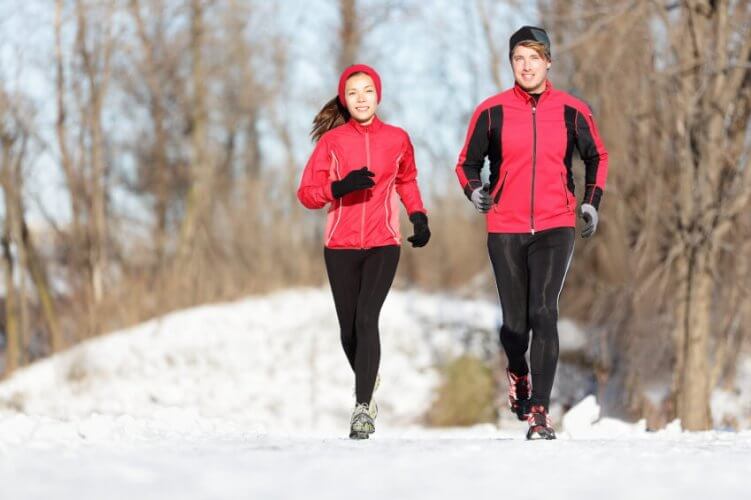
As winter is just around the corner, the country is starting to feel the brunt of harsher weather. This makes exercising safely outdoors more challenging as cold weather extremes have their own risks. There are three main dangers associated with cold weather exercise:
- Frost bite
- Hypothermia
- Increased heart attack risk
Know the signs of frostbite and hypothermia
Frostbite is most common on exposed skin, such as your cheeks, nose and ears, but it also can occur on hands and feet. A temperature of less than 20 degrees Fahrenheit is the point where extreme caution should be taken to protect skin from frostbite. Early warning signs include:
- Numbness
- Loss of feeling or a
- Stinging sensation
If you think you have frostbite, get out of the cold immediately and slowly warm the affected area. You should NOT rub it since that may cause skin damage. If numbness continues, seek emergency care.
Exercising in cold, rainy weather increases the risk of hypothermia (body core temperature of 95 degrees Fahrenheit or lower). Hypothermia is more common than frostbite, and can occur in even milder temperatures. Hypothermia signs and symptoms include:
- Intense shivering
- Slurred speech
- Loss of coordination
- Fatigue
Seek emergency help immediately for possible hypothermia.
Who Should Avoid Cold Weather Exercise?
When you are exposed to low temperatures outdoors, your blood flow is drawn away from the surface of your skin toward your vital organs. This tends to increase your heart rate and blood pressure, which can contribute to a heart attack.
If you have certain medical conditions, such as asthma, heart problems or Raynaud’s disease, you should check with your doctor before you work out in cold weather. Your doctor can review any special precautions you need based on your condition or medications you might take.
Stay safe and warm while exercising outdoors in cold weather:
- Dress in three or more layers: Dress in layers that you can remove as soon as you start to sweat and then put back on as neededUse a lightweight synthetic material to draw moisture away from your skin. Don’t wearheavy cotton materials; these absorb sweat, increasing hypothermia risk.
- Add one or two layers of wool or fleece for warmth
- Finish layering with a lightweight, wind-resistant/water-repellant material
- Wear gloves
- Always wear a hat (you lose about 50percent of your body heat from your uncovered head).
- Cover your face with a scarf or mask whenthe temperature is below freezing.
- Check the weather forecast. Use extreme caution when the temperature falls below 20 degrees Fahrenheit.
- Wear light and/or reflective clothing so you’re visible to drivers.
- Drink plenty of fluids. Staying properly hydrated is just as important during cold weather as during hot weather. You may not realize you’re dehydrated during cold weather exercise, even if you’re not thirsty. Make sure to drink before, during and after your workout.
Dressing in layers and paying attention to the above tips will help you maintain your workout program throughout the challenges of winter weather.
Does cold weather affect your workout program? Feel free to share your thoughts in the comment section below!



